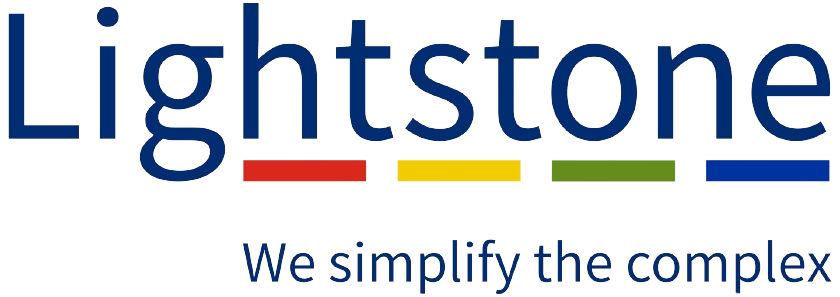Much has been written about the residential property markets in South Africa’s iconic cities, Johannesburg, Cape Town and Durban – but what of the largest townships in or adjacent to each of these cities, Soweto, Umlazi and Khayelitsha?
While the glossy brochures and media headlines often focus on city skylines and prime real estate, there’s a vibrant pulse of urban transformation that often beats strongest in the townships on their periphery.
Five township takeaways

** City definitions as they relate to the maps:

These sprawling communities are home to significant portions of the urban population, and theirs are the untold stories frequently omitted from mainstream property narratives.
Lightstone used the three provinces with the highest GDP and then identified the largest cities in each before selecting the most populous township in each. Data was then examined to compare the townships population size, household income, property values, and property transfer activity.
How many people live there?
Soweto, near Johannesburg, is South Africa’s most iconic township, and is home to around 1.5m people. Its roots can be traced back to the early 1900s before being formally named as South Western Township in 1963, and it’s known today for its vibrant cultural life and thriving tourism industry.
Umlazi, located in Durban, has around 486 000 residents and features a mix of urban development and poverty. Umlazi was created in the 1960s and is Durban’s largest township.
Khayelitsha, on Cape Town’s outskirts, is one of the fastest-growing townships and has around 520 000 residents. The township is characterised by informal housing and strong grassroots activism and it’s important to bear in mind that Khayelitsha is the youngest of the three townships, founded only in the mid-1980s as an apartheid-era relocation zone.
All three reflect South Africa’s complex socio-economic legacy, marked by inequality, resilience, and community spirit. Despite challenges like unemployment and crime, these townships are hubs of innovation, culture, and emerging entrepreneurship, and are playing an important role in the country’s evolving urban landscape.
Population

Adults make up 66% of Umlazi’s population, lower than Soweto and Khayelitsha (both 75%). This may be because many young adults leave Umlazi for jobs in Durban, Gauteng, or Cape Town. Soweto and Khayelitsha, being close to major cities, keep more working-age residents.
According to Lightstone’s estimates, Umlazi’s adult population grew by 10% over the last ten years, behind Soweto at 25% and well behind Khayelitsha at 40%, which probably reflects the ongoing inward migration into the Western Cape from other provinces.
Household income
Apart from being the oldest township with the largest population, Soweto is also the wealthiest of the three townships when it comes to household income. Khayelitsha is the youngest and the poorest.
More than 20% of Soweto’s households have income exceeding R13 000 a month, similar to Umlazi but significantly in excess of Khayelitsha. Soweto has just more than 20% of households earning less than R6 500 a month, compared to just under 60% in Khayelitsha and around 45% in Umlazi (see graph below).
Household income: Soweto, Khayelitsha, Umlazi

So that’s how the townships stack up against each other. But how do they compare to their nearby cities? As anticipated, the cities are significantly wealthier – for example, around 25% of Soweto’s residents earn more than R13 000 a month, while in Johannesburg the figure is more than 70%. But both Soweto and Johannesburg record equally small amounts of households earning less than R3 250 a month.
Household income: Joburg, Cape Town and Durban

Property values
The average property values mirror, unsurprisingly, household income patterns. Soweto (R585 000) and Umlazi (R560 000) are relatively close, while Khayelitsha’s average property value trails at R350 000.
The ratio of households to formal deeds registered property is more favourable in Soweto (2.25:1) than Khayelitsha (3.3:1) and Umlazi (3.2:1).
According to various media reports, Soweto has seen government-driven upgrades, middle-class housing developments, and even lifestyle estates, while Umlazi has formal housing areas like Z and BB sections, with government and private property investment. Khayelitsha on the other hand, is dominated by informal or lower-income RDP (Reconstruction and Development Programme) housing. Remember Khayelitsha is relatively new compared to Soweto and Umlazi, and its rapid growth post-1994 comes from inward migration, and those looking for work seldom have the financial resources to enter the formal housing market.
The next graph starkly demonstrates the difference in property values. The majority of homes in Khayelitsha are valued at between R200 000 and R400 000, while the majority in Soweto are valued between R400 000 and R700 000 and between R400 000 and R600 000 in Umlazi. Soweto has 1 600 properties valued at more than R1m, while Khayelitsha has none.
Property values: Soweto, Khayelitsha and Umlazi

Interestingly the average price of a property in Johannesburg is three times the average in Soweto, while Durban’s average property price is double that of Umlazi and the gap between Cape Town and Khayelitsha is much more pronounced at seven times. This is not surprising as Khayelitsha is the poorest of the three townships, and property prices in Cape Town have been surging in recent years as the Western Cape attracts people from other provinces.
Property activity
Property transfers in both Soweto and Umlazi have been trending downwards over the past decade, despite the occasional rally. But transfers in Khayelitsha were on the increase from 2018 to 2022, before falling each year since then. Despite the trend, though, Soweto still accounts for most transfers by some distance.
Property transfers 2014 – 2024


